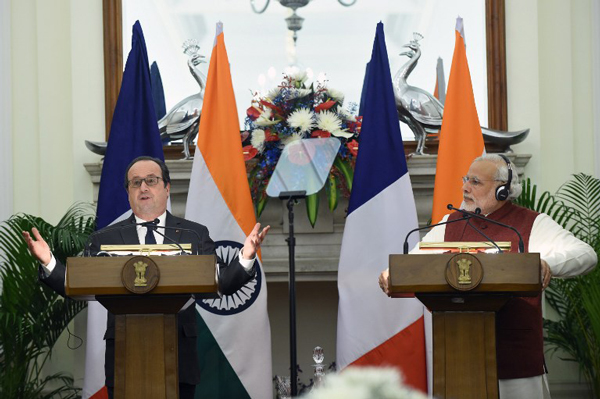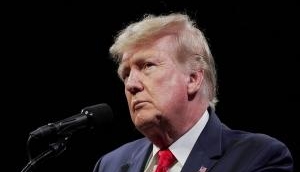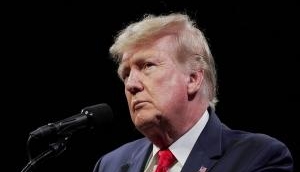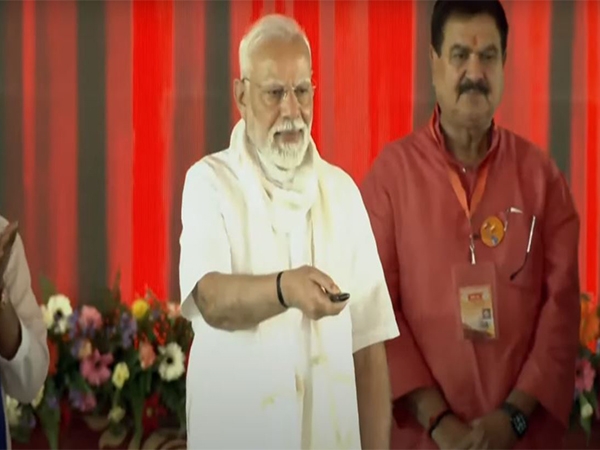Rafale: how the "mother of all deals" ended up like an "unplanned child"

It began with the idea of buying 126 fighter jets, for which the French Rafale was chosen in 2012. Negotiations broke down sometime in 2014. Then there was no news about the jets till April 2015 when Modi, during his trip to France, surprised everyone by announcing a much smaller, 36 fighter jet deal.
But after years of talking to the French, there's still no clarity about what this new deal will eventually cost India. That's why there's little excitement about the Inter Governmental Agreement (IGA) over the Rafale deal that the two countries signed on Monday.
From being 'the mother of all defence deals', the Rafale jet deal has come to us, as an expert recently put it, 'like an unplanned child.'
If the latest development on the Rafale jet business means something, it means a minor victory for the French. Because the Indians have now conceded a hand to the French in price negotiations, by committing itself to buying the Rafale jets.
This seems to be what France wanted for the time being. It was reportedly looking to conclude the deal and make a joint statement during President Hollande's India visit.

Photo: Prakash Singh/AFP
The deal is quite important for French economy. And from the point of view of India, whose Air Force dominance in the subcontinent is depleting rapidly due to its ageing fighter squadrons, getting the state-of-the-art fighter jets is critical.
Here we take a look at how the cost of French fighter jets have spiralled upwards and try to understand why India needs to clinch this deal quickly.
To begin with, why does India needs these fighter jets?
Indian Air Force (IAF) has been interested in buying the Medium Multi-Role Combat Aircraft (MMRCA) since 2001. It was because IAF could anticipate how obsolete some of its fire-power would become within a couple of decades, which is what it's suffering now.
The Air Force, which has a projected requirement of 44 squadrons, currently operates with 32 squadrons. Of these there are 14 squadrons of out-of-date MiG-21s and MiG-27s, which have to be retired from 2017 onward. Some of the other squadrons of Mirage-2000s and Jaguars are also in process of being upgraded.
At the same time India's neighbours have been working to modernise their air forces. China, which cannot collaborate with Western countries in defence because of arms restrictions on it, has been working with the Russians to develop advanced fighter jets. JF-17s are a result of this and more projects are in the pipeline.
Also read: IAF desperately needs more jets; but the Rafales may be a while coming
Pakistan, on the other side, is updating its air force with the help of the Americans. The sale of F-16s, which was temporarily halted, has reportedly been resumed again.
With 36 Rafales, the Indian Air Force is looking at setting up two squadrons of the best available fighter jets immediately to maintain its aerial superiority in the subcontinent.
So why isn't India buying these jets?
While all other matters have been settled, the two countries have basically not made much progress on financial negotiations for the past one and a half years. This is also because the positions from which the two countries began negotiating
India was in a commanding position in 2012 when it was ready to offer $12 billion in exchange for 126 advanced fighter jets. All the world's biggest fighter jets, from the Americans with their F/A-18 Super Hornets, the Russians with MiG-35s, the British with Eurofighter Typhoons, to the Swedes with Saab's Grippens, had lined up for this incredible contract.
At that time India was dictating terms to the French, for whom this contract would mean employment guarantee for 7000 employees and 500 subcontractors of Dassault Aviation, the manufacturer of Rafales, which was going through a dry patch then.
To speed up acquisition of the hardware it was agreed that this contract would directly be between the two countries.
However talks between the two countries on 126 aircraft deal broke down as the total cost escalated up to $22 billion. India subsequently placed a new order for 36 Rafales in ready-to-fly condition.
While India continued to press for better bargains, Egypt and Qatar placed orders of 24 Rafales allowing the French to breathe easy and giving them some confidence while negotiating with India.
Initially the order of 36 jets was expected to cost India $4 billion. But the costs have since, as several media portals have reported, almost doubled.
Latest estimates put the worth of the jets at $9 billion, or Rs 60,000 crore. And it's not just about the cost of the aircraft. India and France are also negotiating the offsets in this deal.
What are offsets?
Offset agreements, followed in defence contracts around the world, are basically conditions put on the seller of a technology to buy products or services from a client. The common practice is to ask the seller to invest a certain amount of the project, back in the buyer's market.
For instance, it is like asking the French to invest a certain percentage of the Rafale deal contract back in India, under Modi's Make in India initiative, which is actually what is happening. In India any defence contract over Rs 300 crore entails an offset cost of 30%. In bigger deals offset is also increased to 50%.
Also read: Why 2016 will be a game-changer for the Indian defence sector
So far the French were arguing hard against bearing offset costs since they're selling Rafales to India at the same cost at which the French air force buys them. However, France's finance minister, Michel Sapin, on Monday pledged to invest $10 billion in India in the coming years. This is good news and may settle the offset debate for good.
Finally, are 36 fighter aircraft enough for the IAF?
No. With their initial order of 126 fighter jets, India was looking to set up 6 squadrons of the best fighter aircraft in the world. But since that order seems to have died a natural death, India would be looking to immediately strengthen its numbers by setting up 2 squadrons.
And possibly inducting more Rafales by either setting up a facility in India or aiding the transfer of technology from Dassault to Hindustan Aeronautics Limited (HAL).
More in Catch:
Pak detains Masood Azhar. Is it anything more than a face-saver for Modi?
#PathankotAttack: Modi has 3 choices. He needs to pick one and stick to it
Gandhis in trouble: how do the arguments stack up in the National Herald case
Love in the aftermath of marriage: three unhappily married poets tell the truth
I was threatened before I withdrew the case against Amit Shah: Rubabuddin







![BJP's Kapil Mishra recreates Shankar Mahadevan’s ‘Breathless’ song to highlight Delhi pollution [WATCH] BJP's Kapil Mishra recreates Shankar Mahadevan’s ‘Breathless’ song to highlight Delhi pollution [WATCH]](https://images.catchnews.com/upload/2022/11/03/kapil-mishra_240884_300x172.png)

![Anupam Kher shares pictures of his toned body on 67th birthday [MUST SEE] Anupam Kher shares pictures of his toned body on 67th birthday [MUST SEE]](https://images.catchnews.com/upload/2022/03/07/Anupam_kher_231145_300x172.jpg)






